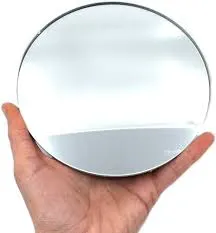

The Advantages of Tempered Glass Panels
Tempered glass panels, also known as toughened glass, have gained immense popularity in various industries due to their robust nature and versatility. This type of glass is manufactured through a process of extreme heating and rapid cooling, which significantly enhances its strength compared to regular glass. As a result, tempered glass panels have become the material of choice for applications ranging from architecture to automotive design and beyond.
Strength and Safety
One of the most significant advantages of tempered glass panels is their strength. The tempering process increases the glass's tensile strength, making it resistant to impact and temperature fluctuations. This durability makes tempered glass the preferred choice for areas where safety is a concern. In environments such as shower enclosures, glass railings, and storefronts, the use of tempered glass panels reduces the risk of breakage under pressure, minimizing the potential for injury.
In the event that tempered glass does break, it shatters into small, blunt pieces rather than sharp shards. This feature is critical in environments where safety is a priority, as it decreases the likelihood of serious cuts and injuries. As a result, many building codes and safety regulations require the use of tempered glass in specific applications, such as doors and windows in homes, commercial buildings, and vehicles.
Aesthetic Appeal
In addition to safety, tempered glass panels offer aesthetic benefits. Their sleek and modern appearance enhances the visual appeal of any space. Architects and designers increasingly incorporate tempered glass into their projects to create open, airy environments that maximize natural light. Whether used for large windows, elegant partitions, or decorative elements, tempered glass adds a touch of elegance and contemporary style.

Furthermore, tempered glass panels are available in various finishes, tints, and textures, allowing for customization to suit different design preferences. This versatility makes tempered glass an excellent choice for interior and exterior applications alike, enabling creative freedom in design and architecture.
Energy Efficiency
Tempered glass panels also contribute to energy efficiency. They can be coated with low-emissivity (Low-E) materials that reflect infrared light, keeping buildings cooler in the summer and warmer in the winter. This property reduces the reliance on heating and cooling systems, leading to lower energy costs and a reduced carbon footprint. As sustainability becomes increasingly important in construction and design, the energy-efficient properties of tempered glass are a significant selling point.
Applications Across Industries
The applications of tempered glass panels are vast. In the architecture and construction sectors, they are used in facades, skylights, and safety barriers. In the automotive industry, tempered glass is employed in side and rear windows due to its strength and clarity. Additionally, tempered glass panels are commonly found in household items such as coffee tables, cooktops, and shower doors, proving their versatility and practicality in everyday life.
Conclusion
In conclusion, tempered glass panels are a remarkable material that combines strength, safety, aesthetics, and energy efficiency. Their ability to withstand impact and thermal stress makes them ideal for a wide range of applications, from commercial buildings to residential homes. As technology advances and the demand for sustainable building materials increases, tempered glass will likely continue to play a crucial role in modern design and architecture.